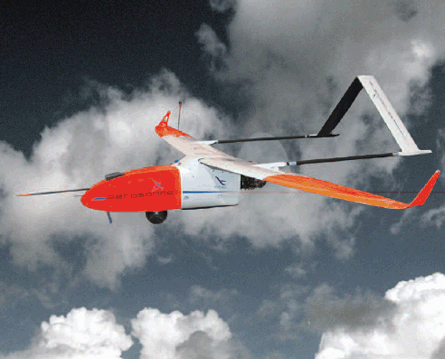With a contract award up to three months away, the competition for a major unmanned aircraft systems contract has narrowed to four announced teams.
The US Marine Corps first attempted to award a contract for a Tier II UAS in 2007. But the US Navy halted that competition to combine Tier II with its own requirement for a small tactical UAS (STUAS). The US Air Force also agreed to join the programme at a later date.
Two years later, navy and USMC officials are evaluating at least four acknowledged proposals for a roughly 68kg (150lb) aircraft that can capture video imagery at low altitude for up to 20h.
UAV Dynamics, a joint venture of General Dynamics and Elbit Systems, has confirmed a proposal based on the new Storm UAS, a "substantially modified and adapted" version of Elbit's new Hermes 90 design.
Little is known about the Storm's performance, but it resembles neither the family of larger Hermes vehicles nor the line-up of smaller Skylark aircraft. Rail-launched, the aircraft can be recovered by sled-landing or rolling landing with fixed landing gear.
 |
|---|
© AAIOne of the competitiors comes in the form of the AAI Aerosonde |
UAV Dynamics faces at least three other competitors, including the AAI Aerosonde Mk 4.7 and the Raytheon/Swift Engineering KillerBee-4.
All three are challenging a Boeing/Insitu team's position as the incumbent supplier for STUAS services, having built a five-year track record supplying 1,000 ScanEagles under a lease deal.
The Boeing team is offering the Integrator UAS for the STUAS/Tier II deal, which Insitu first unveiled in August 2007.
Insitu chief executive Steve Silwa says a "last-minute" change to the USN and USMC contract requirements provides a "unique" advantage for the Integrator. This comes from an "early operational capability services option" inserted into the government's evaluation criteria in June, he says. The new clause allows a competitor to propose skipping a two-year development phase and to launch production almost immediately.
Insitu has the capability to start production as soon as a USMC team completes an operational assessment scheduled to start by end-year, says Silwa. "We think we're uniquely suited to deliver the best capability", he claims.
Insitu could deliver five operational Integrator systems by the second quarter of 2010, Silwa says, with each including multiple vehicles and a ground control station.
The Boeing/Insitu team's three competitors declined an opportunity to describe their ability to meet the criteria for the early operational capability option.
Source: Flight International
















